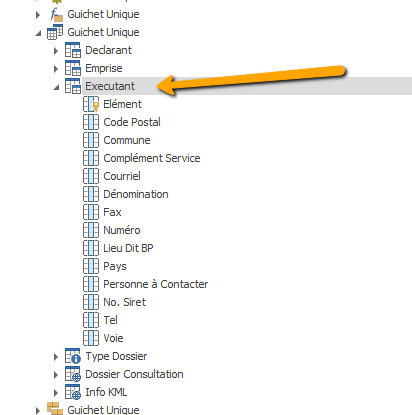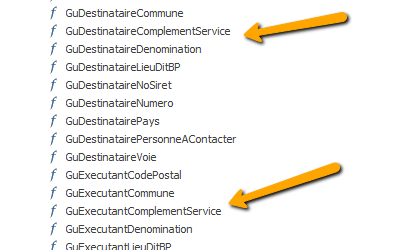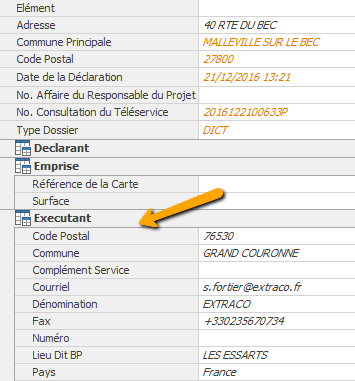The Guichet Unique snap-in processes information from a standard XML file. The file contains information referred to as a Consultation Dossier. Historically, we provided this tool to process either DT or DICT/DT type Consultation Dossiers. In this case, the associated organization is defined in the Declarant section of the DT part of the document. Recently, more and more people have been receiving Consultation Dossiers conforming to the DICT form. In this case there is no Declarant organization, but rather there is a Executant organization. Note that DICT/DT type Consultation Dossiers have both Executant and a Declarant (in the appropriate sections of the document).
In order to go forward, we wanted to define the concept of a Destinataire organization. We would like to define the Destinataire as the Declarant if he exists, otherwise it is the Executant. Since the Declarant and the Executant are conceptually different things, we decided to add a new detail table (Executant) to the Consultation Dossier table, and then populate the Executant and the Declarant according to their availability. Internally, the two objects have the same structure (even though there are some slight differences in the XML representation), so we can use a merging function with the current Consulation Dossier to get the Destinataire using a set of Destinataire functions.
Step 1: Create the Executant table
The first step is to synchronize the version 2 Guichet Unique project from the Shared Project organization. We should be able simply to discover the new Executant table, as well as the detail table relation on Consultation Dossier.

Step 2: Discover the Functions
Here again we can discover new functions from the Guichet Unique (v2) project in the shared projects organization. Here we can find functions to get the postal code, community, complete service, denomination, Lieu Dit or BP, Siret, numero, pays, personne à contacter and voie for both the Executant and the Destinitaire. Note, the destinitaire function will return the Declarant value if the Declarant exists, otherwise it return Executant (if it exists). It is important to note that if the declarant is not null, and the desired field is null, the function will not look in the executant (since the declarant exists), rather it returns null. The null check is at the organization level and not at the field level.

Step 3: Import a DICT Dossier
Now we can simply import a DICT dossier using the standard XML file importer. For a DICT dossier, we should finish with a document that has an Executant, but no declarant

In addition, for DICT dossiers, where there is no declarant, the denomination field in the Guichet Unique group in the snap-ins ribbon page should show the denomination of the Executant.

Import a DT / DICT Dossier
Next, we can import a DT / DICT (cojointe) document, where we may have both a declarant and an executant. Note that in this case, we consider that the Declarant as dominate as it is the Declarant who becomes the Destinitaire for the dossier.
